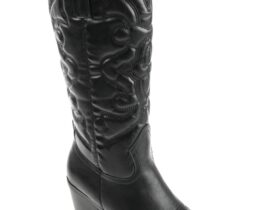Fashion And Western Culture

Humans have and are a body, a body that we dress. A relationship of interdependence is established between the body and the dress in which the fashion affects the relationship that the person establishes with their body and, in turn, the subjective experience of the body influences the wardrobe that the person chooses to wear Vlone. Dressing is a daily practice that is related to the experience of living and acting on the body.
Brief Tour of the Dressed Body in Western History
Throughout the fourteenth century there was a major cultural change in Western Europe. The development of medieval and Renaissance court society, the expansion of commerce across the globe, the emergence of new social classes, and the growth of urban life influenced the development of clothing based on continuous change.
The clothes acquire barter value as cultural and interchangeable material goods, since the dresses were considered items of great value that were even left as an inheritance. Societies become more complex and a new wealthy class appears: the bourgeoisie, which, enriched by the activities of banking and commerce, will try to match the aristocracy with their houses, their customs and also their dresses.
Nobles and bourgeois – the two privileged classes – are going to compete to shine in society with the greatest possible luxury, because throughout the fourteenth and fifteenth centuries it was not only necessary to be rich but also to appear so. In this sense, they went to such extremes of wanting to wear so many and so varied clothes that the monarchs of all Europe promulgated a series of laws, the sumptuary laws, designed to control and regulate the consumption and use of luxury dresses and decorations.
Sumptuary laws are above all discriminatory laws, the fight against luxury is instituted in a paradoxical way of preserving access to it: it is about stopping the social mix, about determining social distances through the same suit, about freezing through the gaze of a set of clothing hierarchies.
Fourteenth Century Fashion
Until the fourteenth century, male and female clothing consisted of a loose and long suit, common in its form for both. The stable dress up to that time for both sexes is modified by emphasizing the sexual differences in bulging thighs, arms and flies in men, while women emphasized their hips, bellies and breasts. From then on, the suit is narrowed and differentiated into short for men and long for women.
Sixteenth and seventeenth centuries fashion
During the sixteenth and seventeenth centuries, the social pressure exerted by external constraints intensifies in the civilization of behavior, not only so as not to be impolite or uncivil to their peers but to differentiate themselves and distinguish themselves from the rest of society
Towards the end of the 18th century, the meanings associated with the corset changed in relation to the new conceptions about the body and gender, which valued a natural femininity and without artifice in the suit.
19th century fashion
Already in the 19th century, with the Industrial Revolution, the corset became a popular cult garment, being considered as a discipline. In the middle of the century it reached its peak, being richly adorned with embroidery, rhinestones, lace and highly worked forms.
Latest Century Fashion
At the end of the 20th century, the corset was back in fashion, but now used as an outer garment, promoted among others by Vivienne Westwood and Madonna, becoming a socially acceptable form of erotic ostentation.
Romanticism as a philosophical and aesthetic movement dating back to the late 18th and early 19th centuries was primarily an attack on modern ideas of empiricism, rationalism, and materialism, extolling the value of change, diversity, individuality, and imagination.
Summary
Through the clothed body we can appreciate the historical journey of a society. The dress is shaped according to the characteristics of the society that prints its vision of it and the individual, weaves in it the characteristics of its culture, and fits it according to its economy and politics. The body is dressed within the limitations of a culture and its norms, its expectations about the body and what constitutes a clothed body. The dress shapes the subjective experience that the person has of their body.











Leave a Reply